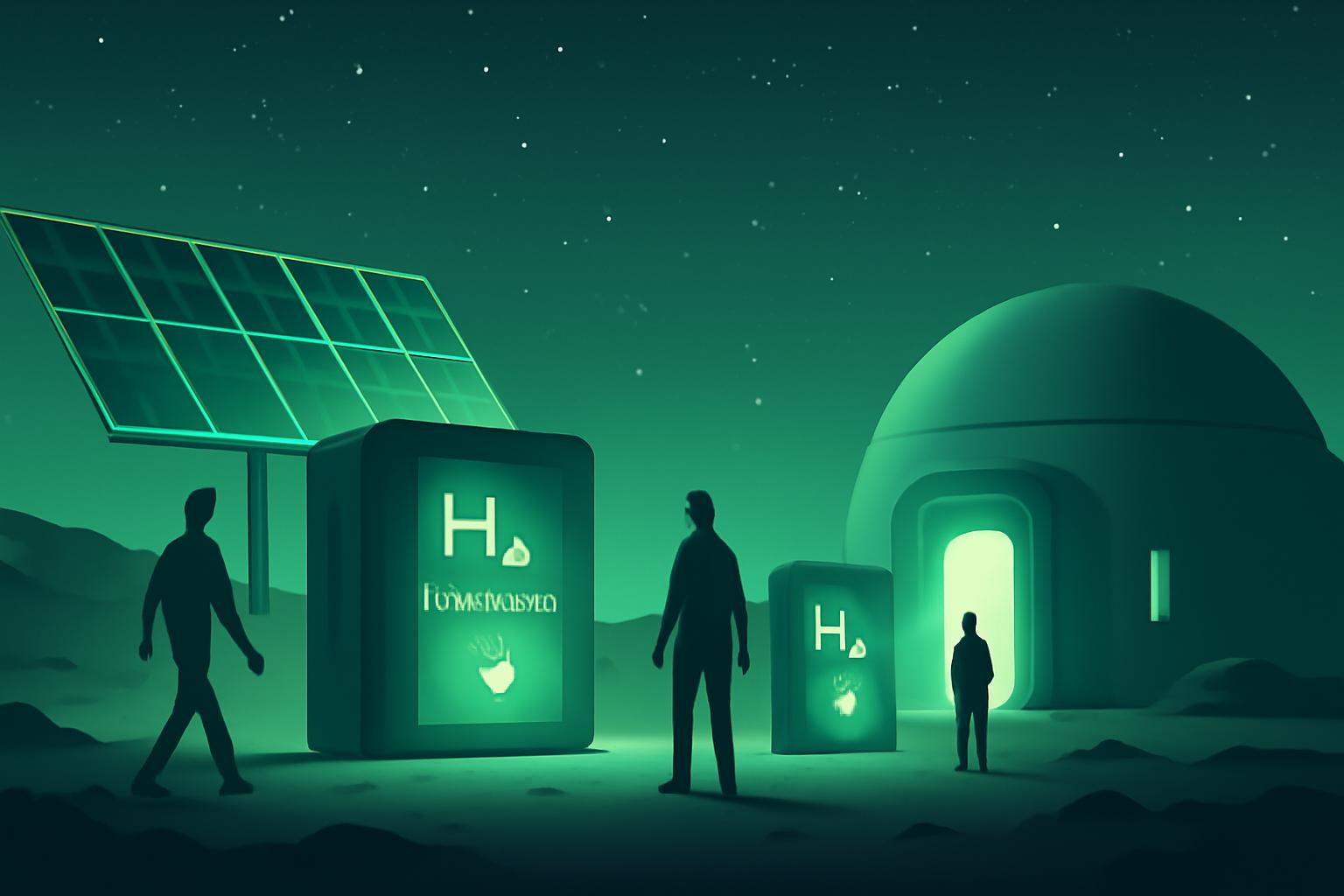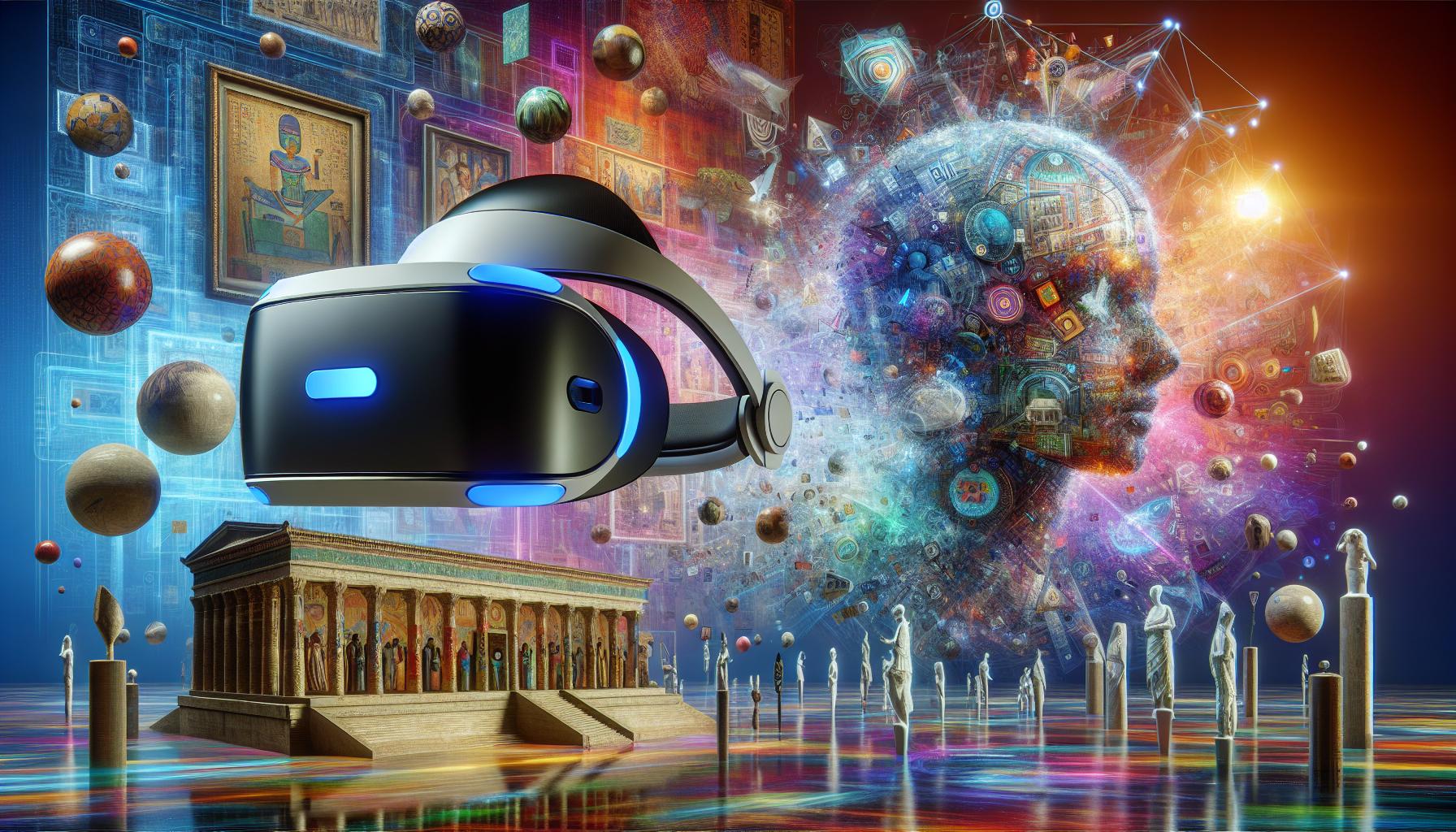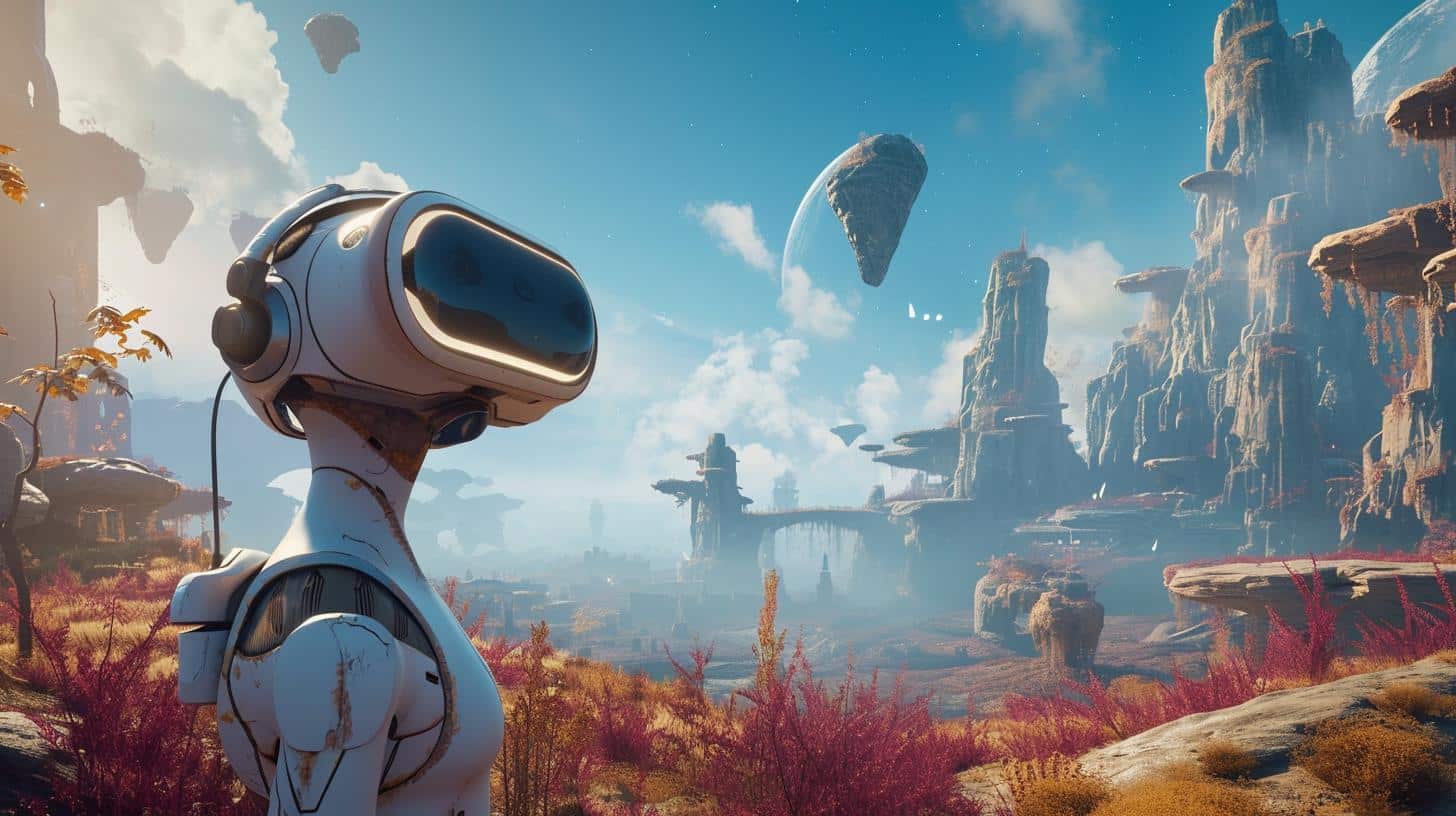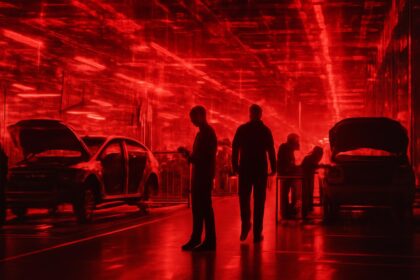The collaboration between Honda and Astrobotic represents a significant advancement in lunar energy solutions. By addressing the critical issue of power continuity during the lunar night, this partnership could unlock sustained surface operations and accelerate the development of a lunar economy. !-- wp:paragraph -->
Contents
About the PartnersFinOracleAI — Market ViewAbout the PartnersFinOracleAI — Market ViewStrategic Implications and Future ProspectsAbout the PartnersFinOracleAI — Market ViewAddressing the Harsh Lunar EnvironmentStrategic Implications and Future ProspectsAbout the PartnersFinOracleAI — Market ViewAddressing the Harsh Lunar EnvironmentStrategic Implications and Future ProspectsAbout the PartnersFinOracleAI — Market ViewInnovative Energy Storage and Generation ApproachAddressing the Harsh Lunar EnvironmentStrategic Implications and Future ProspectsAbout the PartnersFinOracleAI — Market ViewHonda and Astrobotic Forge Partnership to Power the MoonInnovative Energy Storage and Generation ApproachAddressing the Harsh Lunar EnvironmentStrategic Implications and Future ProspectsAbout the PartnersFinOracleAI — Market View
- Opportunities: Enhances reliability of lunar surface missions; positions Honda as a key player in space technology; strengthens Japan’s role in Artemis and international lunar efforts.
- Risks: Technical challenges in system integration and scalability; dependency on lunar environmental conditions; potential delays in lunar infrastructure deployment.
About the Partners
- Astrobotic: Founded in 2007 and based in Pittsburgh, Astrobotic specializes in lunar landers and surface systems. Despite a recent unsuccessful mission with its Peregrine lander, the company is actively developing power and mobility solutions to support a future lunar economy.
- Honda: Renowned for its automotive innovations, Honda has invested extensively in fuel cell research and is now applying this expertise to support extraterrestrial power needs.
FinOracleAI — Market View
The collaboration between Honda and Astrobotic represents a significant advancement in lunar energy solutions. By addressing the critical issue of power continuity during the lunar night, this partnership could unlock sustained surface operations and accelerate the development of a lunar economy. !-- wp:paragraph -->- Opportunities: Enhances reliability of lunar surface missions; positions Honda as a key player in space technology; strengthens Japan’s role in Artemis and international lunar efforts.
- Risks: Technical challenges in system integration and scalability; dependency on lunar environmental conditions; potential delays in lunar infrastructure deployment.
About the Partners
- Astrobotic: Founded in 2007 and based in Pittsburgh, Astrobotic specializes in lunar landers and surface systems. Despite a recent unsuccessful mission with its Peregrine lander, the company is actively developing power and mobility solutions to support a future lunar economy.
- Honda: Renowned for its automotive innovations, Honda has invested extensively in fuel cell research and is now applying this expertise to support extraterrestrial power needs.
FinOracleAI — Market View
The collaboration between Honda and Astrobotic represents a significant advancement in lunar energy solutions. By addressing the critical issue of power continuity during the lunar night, this partnership could unlock sustained surface operations and accelerate the development of a lunar economy. !-- wp:paragraph -->- Opportunities: Enhances reliability of lunar surface missions; positions Honda as a key player in space technology; strengthens Japan’s role in Artemis and international lunar efforts.
- Risks: Technical challenges in system integration and scalability; dependency on lunar environmental conditions; potential delays in lunar infrastructure deployment.
Strategic Implications and Future Prospects
This collaboration marks Honda’s inaugural public foray into space applications for its fuel cell technology, reflecting Japan’s increasing commitment to lunar exploration. Japan, a founding signatory of the Artemis Accords, continues to strengthen its presence in space through astronaut research aboard the International Space Station and partnerships in lunar missions. !-- wp:paragraph --> The lunar south pole, the focus of NASA’s Artemis program, offers near-constant sunlight and potential water ice reserves, making it an ideal location for establishing a sustainable human presence. Power systems like LunaGrid combined with Honda’s RFC technology could be pivotal in enabling long-duration surface operations and advancing lunar infrastructure. !-- wp:paragraph -->About the Partners
- Astrobotic: Founded in 2007 and based in Pittsburgh, Astrobotic specializes in lunar landers and surface systems. Despite a recent unsuccessful mission with its Peregrine lander, the company is actively developing power and mobility solutions to support a future lunar economy.
- Honda: Renowned for its automotive innovations, Honda has invested extensively in fuel cell research and is now applying this expertise to support extraterrestrial power needs.
FinOracleAI — Market View
The collaboration between Honda and Astrobotic represents a significant advancement in lunar energy solutions. By addressing the critical issue of power continuity during the lunar night, this partnership could unlock sustained surface operations and accelerate the development of a lunar economy. !-- wp:paragraph -->- Opportunities: Enhances reliability of lunar surface missions; positions Honda as a key player in space technology; strengthens Japan’s role in Artemis and international lunar efforts.
- Risks: Technical challenges in system integration and scalability; dependency on lunar environmental conditions; potential delays in lunar infrastructure deployment.
Addressing the Harsh Lunar Environment
One of the most significant obstacles for lunar exploration is enduring the lunar night, which can last approximately 14 Earth days and features temperatures plunging to -424°F (-253°C). During this period, solar panels become ineffective. Honda’s regenerative fuel cell system offers a promising solution by storing excess energy generated during the lunar day and reliably supplying power through the night. !-- wp:paragraph -->Strategic Implications and Future Prospects
This collaboration marks Honda’s inaugural public foray into space applications for its fuel cell technology, reflecting Japan’s increasing commitment to lunar exploration. Japan, a founding signatory of the Artemis Accords, continues to strengthen its presence in space through astronaut research aboard the International Space Station and partnerships in lunar missions. !-- wp:paragraph --> The lunar south pole, the focus of NASA’s Artemis program, offers near-constant sunlight and potential water ice reserves, making it an ideal location for establishing a sustainable human presence. Power systems like LunaGrid combined with Honda’s RFC technology could be pivotal in enabling long-duration surface operations and advancing lunar infrastructure. !-- wp:paragraph -->About the Partners
- Astrobotic: Founded in 2007 and based in Pittsburgh, Astrobotic specializes in lunar landers and surface systems. Despite a recent unsuccessful mission with its Peregrine lander, the company is actively developing power and mobility solutions to support a future lunar economy.
- Honda: Renowned for its automotive innovations, Honda has invested extensively in fuel cell research and is now applying this expertise to support extraterrestrial power needs.
FinOracleAI — Market View
The collaboration between Honda and Astrobotic represents a significant advancement in lunar energy solutions. By addressing the critical issue of power continuity during the lunar night, this partnership could unlock sustained surface operations and accelerate the development of a lunar economy. !-- wp:paragraph -->- Opportunities: Enhances reliability of lunar surface missions; positions Honda as a key player in space technology; strengthens Japan’s role in Artemis and international lunar efforts.
- Risks: Technical challenges in system integration and scalability; dependency on lunar environmental conditions; potential delays in lunar infrastructure deployment.
Addressing the Harsh Lunar Environment
One of the most significant obstacles for lunar exploration is enduring the lunar night, which can last approximately 14 Earth days and features temperatures plunging to -424°F (-253°C). During this period, solar panels become ineffective. Honda’s regenerative fuel cell system offers a promising solution by storing excess energy generated during the lunar day and reliably supplying power through the night. !-- wp:paragraph -->Strategic Implications and Future Prospects
This collaboration marks Honda’s inaugural public foray into space applications for its fuel cell technology, reflecting Japan’s increasing commitment to lunar exploration. Japan, a founding signatory of the Artemis Accords, continues to strengthen its presence in space through astronaut research aboard the International Space Station and partnerships in lunar missions. !-- wp:paragraph --> The lunar south pole, the focus of NASA’s Artemis program, offers near-constant sunlight and potential water ice reserves, making it an ideal location for establishing a sustainable human presence. Power systems like LunaGrid combined with Honda’s RFC technology could be pivotal in enabling long-duration surface operations and advancing lunar infrastructure. !-- wp:paragraph -->About the Partners
- Astrobotic: Founded in 2007 and based in Pittsburgh, Astrobotic specializes in lunar landers and surface systems. Despite a recent unsuccessful mission with its Peregrine lander, the company is actively developing power and mobility solutions to support a future lunar economy.
- Honda: Renowned for its automotive innovations, Honda has invested extensively in fuel cell research and is now applying this expertise to support extraterrestrial power needs.
FinOracleAI — Market View
The collaboration between Honda and Astrobotic represents a significant advancement in lunar energy solutions. By addressing the critical issue of power continuity during the lunar night, this partnership could unlock sustained surface operations and accelerate the development of a lunar economy. !-- wp:paragraph -->- Opportunities: Enhances reliability of lunar surface missions; positions Honda as a key player in space technology; strengthens Japan’s role in Artemis and international lunar efforts.
- Risks: Technical challenges in system integration and scalability; dependency on lunar environmental conditions; potential delays in lunar infrastructure deployment.
Innovative Energy Storage and Generation Approach
The partnership centers on integrating Honda’s RFC system with Astrobotic’s LunaGrid — a scalable power infrastructure built around solar arrays. Honda’s RFC stores solar energy as hydrogen during lunar daylight and converts it back into electricity at night, producing water as the sole byproduct. This water is then recycled through a high-pressure electrolysis process, creating a closed-loop energy cycle designed for extended lunar missions. !-- wp:paragraph --> Astrobotic contributes its Vertical Solar Array Technology (VSAT), engineered to track the sun and maximize energy capture with a planned capacity of up to 10 kilowatts. An enhanced XL version is under development, promising up to five times greater power output. Together, these technologies aim to provide uninterrupted power, enabling sustained operations during the Moon’s prolonged nights. !-- wp:paragraph -->Addressing the Harsh Lunar Environment
One of the most significant obstacles for lunar exploration is enduring the lunar night, which can last approximately 14 Earth days and features temperatures plunging to -424°F (-253°C). During this period, solar panels become ineffective. Honda’s regenerative fuel cell system offers a promising solution by storing excess energy generated during the lunar day and reliably supplying power through the night. !-- wp:paragraph -->Strategic Implications and Future Prospects
This collaboration marks Honda’s inaugural public foray into space applications for its fuel cell technology, reflecting Japan’s increasing commitment to lunar exploration. Japan, a founding signatory of the Artemis Accords, continues to strengthen its presence in space through astronaut research aboard the International Space Station and partnerships in lunar missions. !-- wp:paragraph --> The lunar south pole, the focus of NASA’s Artemis program, offers near-constant sunlight and potential water ice reserves, making it an ideal location for establishing a sustainable human presence. Power systems like LunaGrid combined with Honda’s RFC technology could be pivotal in enabling long-duration surface operations and advancing lunar infrastructure. !-- wp:paragraph -->About the Partners
- Astrobotic: Founded in 2007 and based in Pittsburgh, Astrobotic specializes in lunar landers and surface systems. Despite a recent unsuccessful mission with its Peregrine lander, the company is actively developing power and mobility solutions to support a future lunar economy.
- Honda: Renowned for its automotive innovations, Honda has invested extensively in fuel cell research and is now applying this expertise to support extraterrestrial power needs.
FinOracleAI — Market View
The collaboration between Honda and Astrobotic represents a significant advancement in lunar energy solutions. By addressing the critical issue of power continuity during the lunar night, this partnership could unlock sustained surface operations and accelerate the development of a lunar economy. !-- wp:paragraph -->- Opportunities: Enhances reliability of lunar surface missions; positions Honda as a key player in space technology; strengthens Japan’s role in Artemis and international lunar efforts.
- Risks: Technical challenges in system integration and scalability; dependency on lunar environmental conditions; potential delays in lunar infrastructure deployment.
Honda and Astrobotic Forge Partnership to Power the Moon
Automotive leader Honda has entered a strategic collaboration with lunar technology startup Astrobotic to explore the potential of regenerative fuel cell (RFC) technology in sustaining continuous power on the Moon. This alliance aims to address the critical challenge of providing reliable energy during the Moon’s two-week-long nights when solar power is unavailable. !-- wp:paragraph -->Innovative Energy Storage and Generation Approach
The partnership centers on integrating Honda’s RFC system with Astrobotic’s LunaGrid — a scalable power infrastructure built around solar arrays. Honda’s RFC stores solar energy as hydrogen during lunar daylight and converts it back into electricity at night, producing water as the sole byproduct. This water is then recycled through a high-pressure electrolysis process, creating a closed-loop energy cycle designed for extended lunar missions. !-- wp:paragraph --> Astrobotic contributes its Vertical Solar Array Technology (VSAT), engineered to track the sun and maximize energy capture with a planned capacity of up to 10 kilowatts. An enhanced XL version is under development, promising up to five times greater power output. Together, these technologies aim to provide uninterrupted power, enabling sustained operations during the Moon’s prolonged nights. !-- wp:paragraph -->Addressing the Harsh Lunar Environment
One of the most significant obstacles for lunar exploration is enduring the lunar night, which can last approximately 14 Earth days and features temperatures plunging to -424°F (-253°C). During this period, solar panels become ineffective. Honda’s regenerative fuel cell system offers a promising solution by storing excess energy generated during the lunar day and reliably supplying power through the night. !-- wp:paragraph -->Strategic Implications and Future Prospects
This collaboration marks Honda’s inaugural public foray into space applications for its fuel cell technology, reflecting Japan’s increasing commitment to lunar exploration. Japan, a founding signatory of the Artemis Accords, continues to strengthen its presence in space through astronaut research aboard the International Space Station and partnerships in lunar missions. !-- wp:paragraph --> The lunar south pole, the focus of NASA’s Artemis program, offers near-constant sunlight and potential water ice reserves, making it an ideal location for establishing a sustainable human presence. Power systems like LunaGrid combined with Honda’s RFC technology could be pivotal in enabling long-duration surface operations and advancing lunar infrastructure. !-- wp:paragraph -->About the Partners
- Astrobotic: Founded in 2007 and based in Pittsburgh, Astrobotic specializes in lunar landers and surface systems. Despite a recent unsuccessful mission with its Peregrine lander, the company is actively developing power and mobility solutions to support a future lunar economy.
- Honda: Renowned for its automotive innovations, Honda has invested extensively in fuel cell research and is now applying this expertise to support extraterrestrial power needs.
FinOracleAI — Market View
The collaboration between Honda and Astrobotic represents a significant advancement in lunar energy solutions. By addressing the critical issue of power continuity during the lunar night, this partnership could unlock sustained surface operations and accelerate the development of a lunar economy. !-- wp:paragraph -->- Opportunities: Enhances reliability of lunar surface missions; positions Honda as a key player in space technology; strengthens Japan’s role in Artemis and international lunar efforts.
- Risks: Technical challenges in system integration and scalability; dependency on lunar environmental conditions; potential delays in lunar infrastructure deployment.













